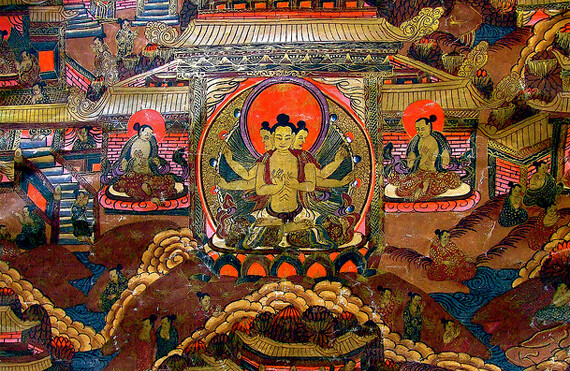He has reverent followers around the world, but inside China the Dalai Lama is not universally loved.
The 72-year-old spiritual leader of the world's Tibetan Buddhists is often portrayed in the Western media as a gentle yet persistent advocate for justice and Tibetan self-rule. A 1999 profile in Time magazine referred to him as an "apostle of peace." For his devotion to nonviolence, the Nobel Peace Prize Committee likened him to Mahatma Gandhi.
By contrast, Chinese state media frequently paints the Dalai Lama as the leader of a terrorist clique. This week, Chinese government officials called him a "wolf in monk's robes," and accused his followers of plotting suicide attacks inside Tibet. Among ordinary Chinese, he is widely considered a separatist bent on dismantling China's ancient territorial integrity.
I sat down recently with a number of young Chinese-American students to investigate these starkly different attitudes. Our conversations revealed a range of emotions, from mild confusion to anger, and a perception of pervasive American media bias against China. The Tibet issue, they said, has been distorted and misrepresented in the American press. Almost all the students agreed that recent coverage of turmoil in Tibet has left out or minimized vital historical context. Without this, they wondered, how can Americans make judgments about the righteousness of the Dalai Lama's cause?
The main issue, they acknowledged, is whether Tibet belongs to China. Unlike most Americans, nearly all Chinese agree that it does. Both the Tibetan government-in-exile and the Chinese central government have mined ancient historical records to prove or disprove the legitimacy of Chinese rule. The argument traces back to the 13th century, when invading Mongols subjugated China and incorporated Tibet into the vast empire of the Khans.
Tibet remained an undisputed part of China until the collapse of the Qing dynasty in 1901. With the establishment of the Republic of China under President Chiang Kai-shek and the chaotic civil war that followed in the 1920s and 1930s, Chinese troops and officials were briefly expelled from Tibet. Independence proved short. Mao Zedong's People's Liberation Army invaded in 1950 and reclaimed Tibet for communist China.
"It's not like Tibet was a completely independent country before 1949," a Chinese-born scholar now living in New York told me. "Was Tibet part of China at that time? There are scholars that differ on this issue. But the Chinese perspective is that once you become part of the national family, it should be up to the whole population to decide whether you can secede or not."
Numerically speaking, that policy does not bode well for advocates of Tibetan independence. Among China's 1.3 billion people, only 5 million are Tibetans.
Many of the students I spoke with agreed that a chasm has formed between them and their parents. Whether coopted by prosperity or simply disillusioned, the Tiananmen Square generation has grown politically tame, they said. Memories of the political factionalism and bloody infighting of the Cultural Revolution era have led many middle-aged Chinese to abandon activism and embrace slow but steady reform of China's economic and political system. To them, the Tibetan independence movement smacks of radicalism.
While she was growing up in Guanzhou, one of the students, Guorui Du, who goes by Rui, shared the dim view of the Dalai Lama held by many of her peers. "His reputation is very bad, especially among my parents' generation," she said. But since coming to New York in August 2007 Rui has begun to see things differently.
Rui was surprised to learn of the Dalai Lama's 1989 Nobel Peace Prize, a fact she says is little known inside China. She called her parents to share this "news" and found them ambivalent. "To my mom's generation, stability is the most important thing," she said. But, as the nightly pictures on Chinese state television indicate, the Dalai Lama is agitating for change.
Despite her parent's lack of interest, Rui's curiosity was piqued by the Chinese government's suppression of key elements of the Dalai Lama's biography. Wondering what else she had been missing, Rui dashed off an online diary entry addressing her confusion, only to be told by friends back in China that they couldn't access her page. Her entry fell victim to the Golden Shield, an internet filter sometimes called the Great Firewall of China. The Golden Shield allows Chinese authorities block sites that display banned words or phrases.
After Rui deleted her Dalai Lama entry, her diary reappeared online.
![]() This article is licensed under a Creative Commons License.
This article is licensed under a Creative Commons License.
Please read our usage policy.




